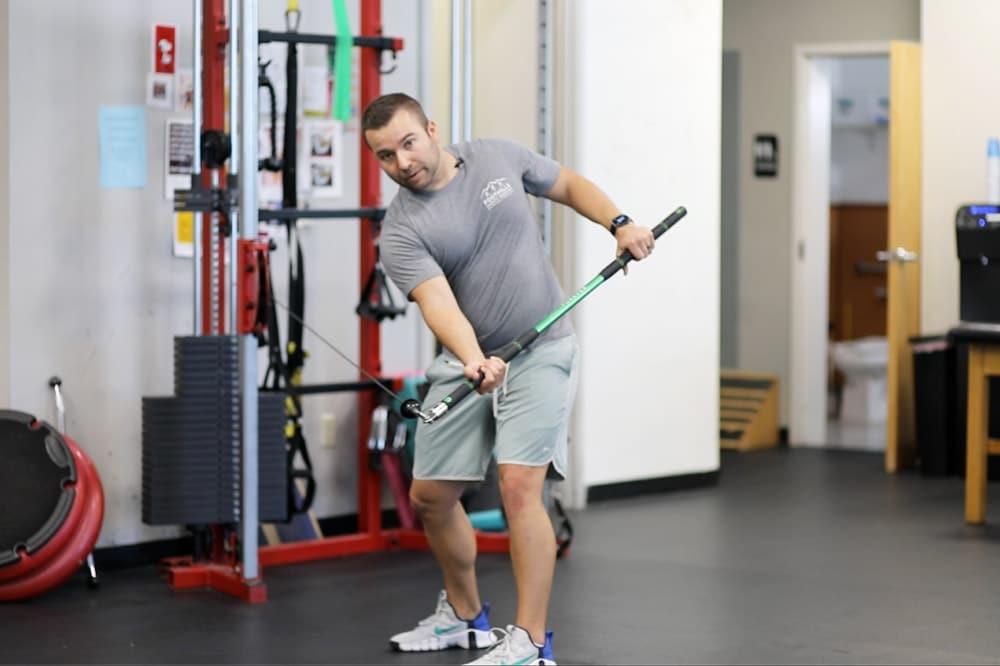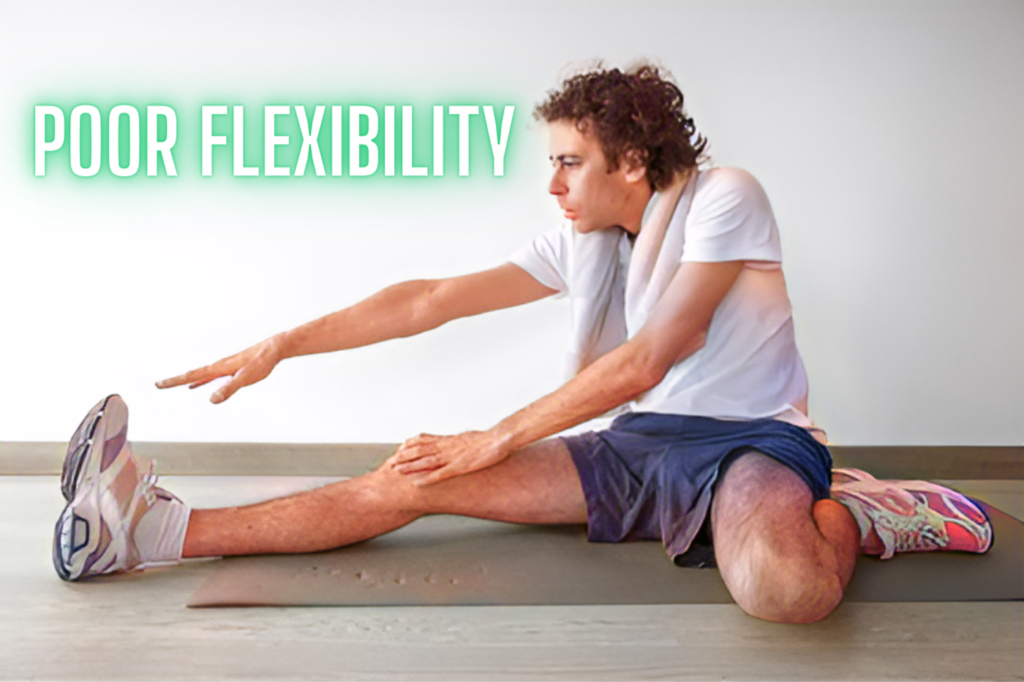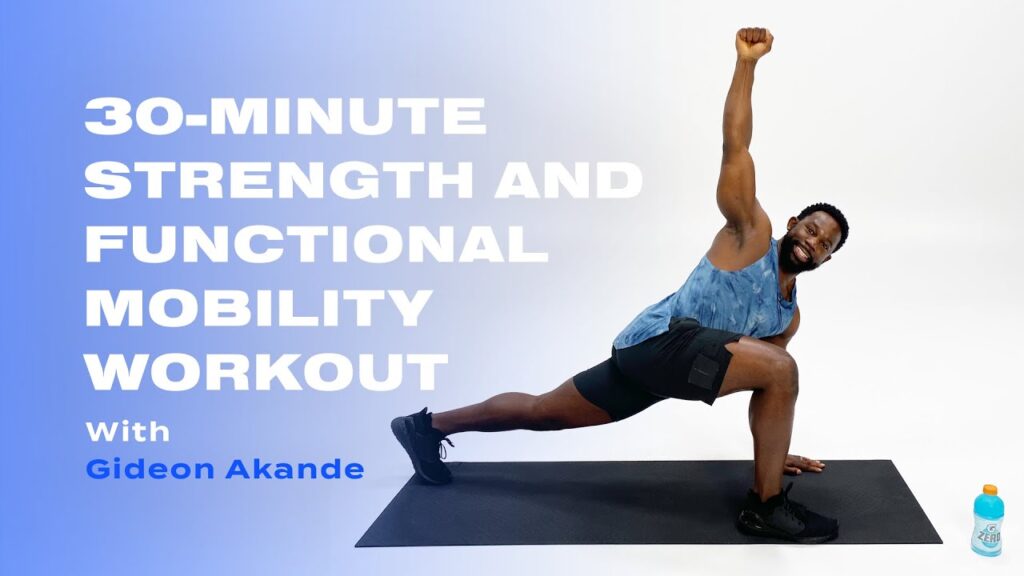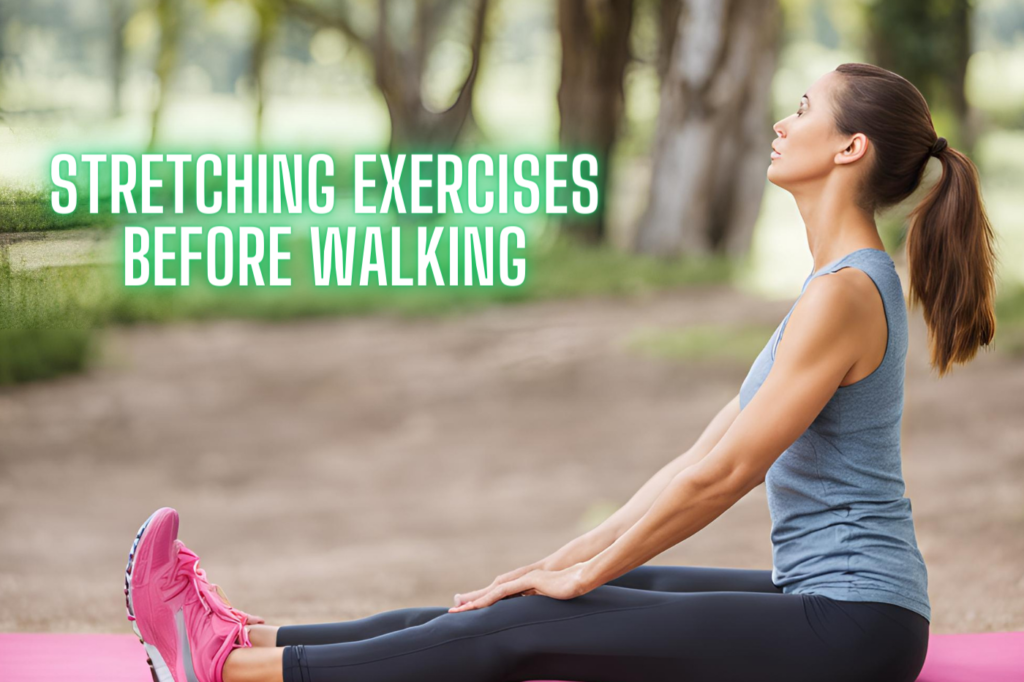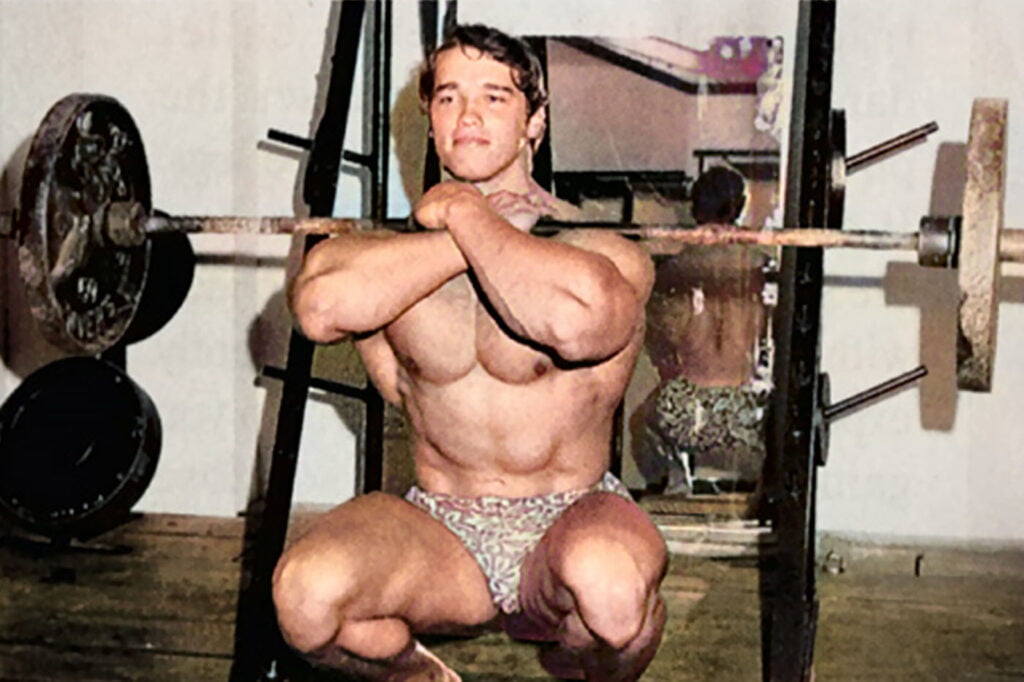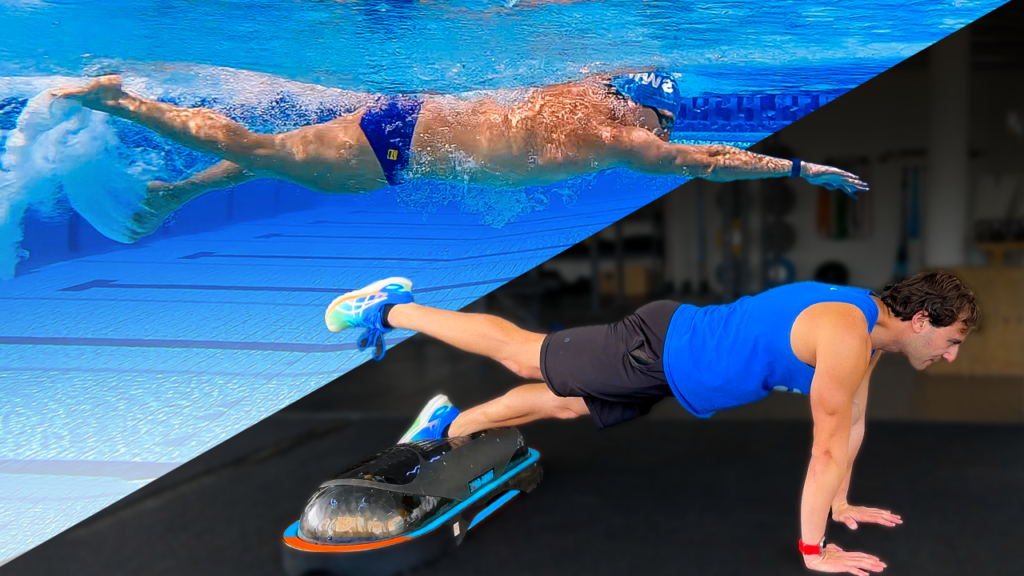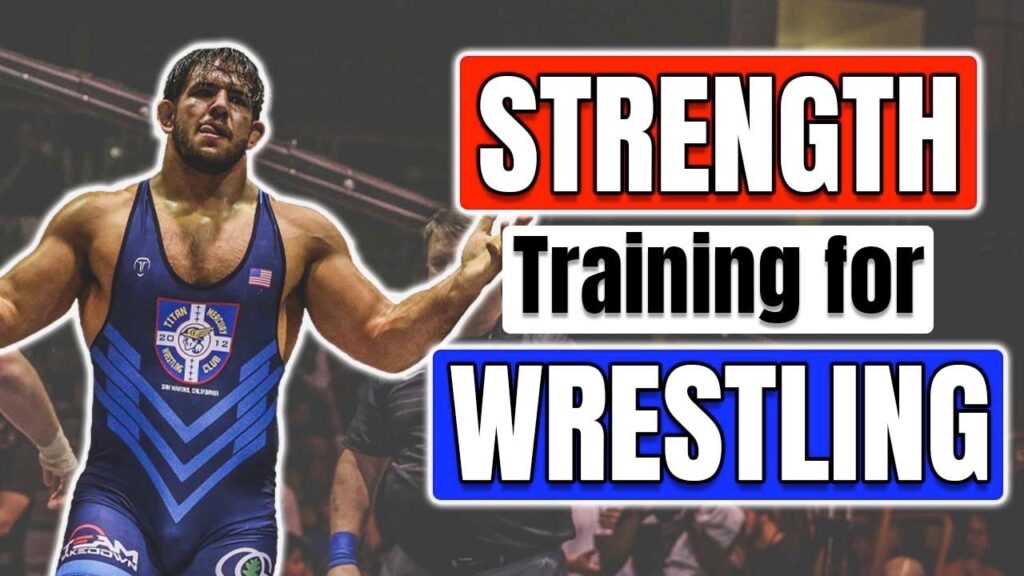Strength training for golf enhances performance and reduces injury risk. It builds muscle strength, flexibility, and stability.
Golf is a sport that demands precision, strength, and endurance. To optimize your game, incorporating strength training is crucial. Building muscle strength helps improve your swing power and accuracy. Flexibility exercises enhance your range of motion, allowing for a smoother and more controlled swing.
Stability training ensures better balance and reduces the risk of injuries. A well-rounded strength training program tailored for golfers targets the core, legs, and upper body. This holistic approach not only boosts your performance on the course but also promotes overall physical health. Embrace strength training to elevate your golf game and enjoy a more robust, injury-free experience.

Credit: www.youtube.com
Golf Fitness Revolution
Golfers are becoming more athletic. Strength training helps golfers improve their game. Strong muscles support better swings. More golfers now focus on their fitness.
A powerful swing needs strong muscles. Strength training improves swing speed. It also helps with stability and balance. Golfers can hit the ball further with less effort.
Better fitness means fewer injuries. Strong muscles protect joints and tendons. Golfers can play longer without pain. Improved fitness leads to better overall performance.
Core Strength: Foundation Of Power
Core strength is key for golfers. It helps stabilize the body during swings. A strong core can improve your balance and control.
Planks are great for building core strength. Hold a plank for 30 seconds to start. Russian twists work your obliques. Use a medicine ball for added resistance.
Dead bugs are also excellent. Lie on your back with arms and legs in the air. Lower one arm and the opposite leg, then switch.
Bird dogs involve balancing on hands and knees. Extend one arm and the opposite leg. Hold and switch sides.
Upper Body Conditioning
Strength training for golf enhances upper body conditioning, improving swing power and accuracy. Develop muscle strength and flexibility for better performance on the course.
Building Arm Strength
Strong arms help with powerful swings. Use dumbbells for bicep curls and tricep extensions. Keep your form correct to avoid injury. Start with lighter weights and build up slowly. Strong arms also improve grip strength. This makes holding the club easier.
Shoulder Mobility And Stability
Good shoulder mobility helps with a full range of motion. Perform shoulder rotations and stretches daily. Stability is also key for control. Use resistance bands for shoulder exercises. Strong shoulders help maintain posture during swings.
Lower Body Workouts
Lower body workouts enhance strength training for golf, boosting power in swings and improving overall game performance. Strengthening legs and hips ensures better stability and endurance on the course.
Leg Strength Equals Driving Force
Strong legs help golfers drive the ball farther. Squats are excellent for building leg strength. Perform squats with or without weights. Lunges also target the leg muscles. Do forward lunges to improve balance and power. Deadlifts are great for hamstrings and glutes. Use proper form to avoid injuries.
Key Lower Body Exercises
| Exercise | Muscles Targeted | Benefits |
|---|---|---|
| Squats | Quadriceps, Hamstrings, Glutes | Builds overall leg strength |
| Lunges | Quadriceps, Glutes, Calves | Improves balance and stability |
| Deadlifts | Hamstrings, Glutes, Lower Back | Enhances power and posture |
Flexibility And Rotation
Strength training for golf enhances flexibility and rotation, crucial for an effective swing. Improved muscle strength boosts stability and power.
Importance Of Muscle Elasticity
Muscle elasticity is crucial for golfers. It helps improve the range of motion. This allows for a smoother swing. Flexible muscles reduce the risk of injury. Stretching exercises help keep muscles elastic. Yoga can also improve muscle elasticity. Regular stretching leads to better performance.
Drills For Enhanced Rotation
Specific drills can enhance rotation. Torso twists are effective. Stand with feet shoulder-width apart. Twist your torso left and right. Do this for 30 seconds. Medicine ball throws also help. Hold a medicine ball with both hands. Rotate your body and throw the ball against a wall. Repeat 10 times on each side. Cable rotations are another great drill. Use a cable machine at the gym. Rotate your body while holding the cable handle. This strengthens the core and improves rotation.
Grip Strength And Wrist Control
A firm grip helps in achieving better swings. Strong hands make sure the golf club stays steady. Practice squeezing a stress ball daily. This simple exercise can build hand strength. Use a grip trainer for more resistance. Strong hands lead to more control over the club.
Wrist exercises can improve precision in golf. Try wrist curls with light weights. These help in making wrists stronger. Reverse wrist curls also add strength. Rotate your wrists in circles, both clockwise and counterclockwise. This builds flexibility. Strong and flexible wrists improve your golf performance.
Injury Prevention Strategies
Golfers often face shoulder injuries, elbow pain, and lower back issues. These injuries can hinder performance. Knee pain is also common among golfers. Wrist injuries may occur due to repetitive swings. Neck strain can result from improper posture. Hip problems might arise from rotational movements. Proper care can help avoid these injuries.
Stretching before and after games is crucial. Strengthening exercises for the core help support the back. Wrist curls can prevent wrist injuries. Shoulder rotations aid in keeping the shoulders flexible. Hip flexor stretches improve hip mobility. Foam rolling helps in muscle recovery. Balance exercises can enhance overall stability. These exercises keep the body strong and flexible.
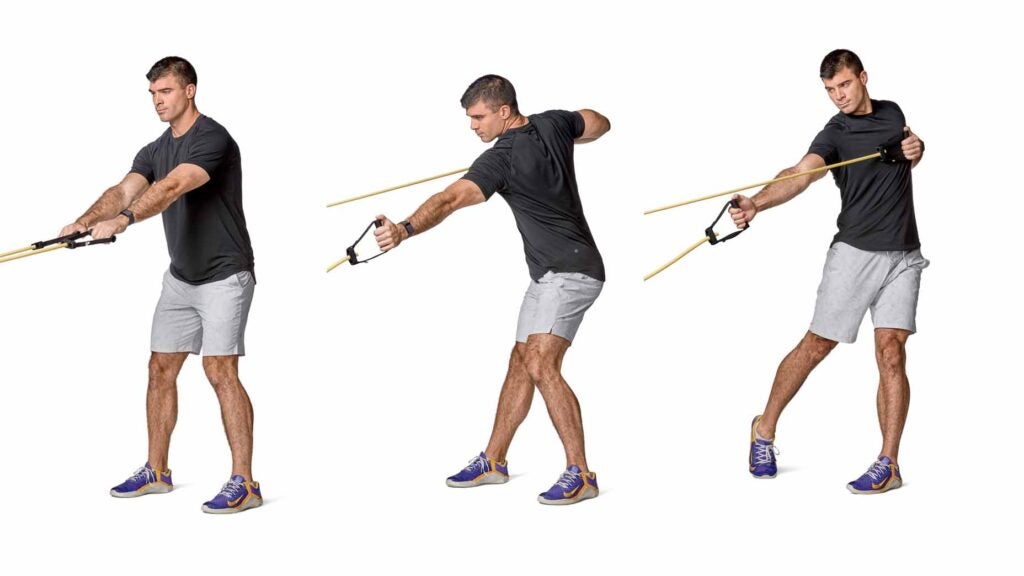
Credit: golf.com
Integrating Strength Training Into Your Routine
A balanced workout plan is essential. It helps improve your golf game. Focus on different muscle groups. Include exercises for legs, arms, and core. Squats and lunges are great for leg strength. Push-ups and rows build arm muscles. Planks and sit-ups strengthen your core. Consistency is key. Aim for at least three sessions a week. Each session should last about 45 minutes. Always start with a warm-up. This can be light jogging or stretching. End with a cool-down period. Stretching after workouts helps muscles recover.
Recovery is crucial for muscle growth. Rest days are as important as workout days. Ensure you get enough sleep. Aim for 7-9 hours each night. Proper nutrition fuels your body. Eat a balanced diet rich in protein. Include fruits, vegetables, and whole grains. Stay hydrated by drinking plenty of water. Protein shakes can help post-workout recovery. Avoid junk food and sugary drinks. They can harm your progress. Listen to your body. If you feel pain, take a break.
Technology And Equipment
Golfers use advanced tools to improve their game. Launch monitors help track the ball’s flight. Smart sensors attach to clubs and provide data. Virtual simulators create realistic practice environments. These tools make training more fun and effective. Golfers can see their progress in real-time.
Picking the right gear is crucial for golfers. Custom-fitted clubs ensure better swings. Comfortable golf shoes provide stability and grip. Weighted clubs help build strength. Resistance bands are great for warm-ups. All these items can enhance performance on the course. Selecting the right equipment can make a big difference.

Credit: www.youtube.com
Real-world Success Stories
Strength training for golf has transformed amateurs into pros, boosting power and precision. Golfers report lower injury rates and improved performance.
Professional Golfers’ Training Regimes
Top golfers use strength training for better performance. They focus on core muscles and flexibility. This helps with longer drives and better control. Many pros use resistance bands and weighted clubs. These tools improve swing speed and accuracy.
Amateur Transformations
Amateur golfers see big changes with strength training. They gain confidence and consistency on the course. Simple exercises like squats and planks make a difference. Many amateurs report improved stamina and reduced injuries. This leads to better overall game and more enjoyment.
Monitoring Progress And Making Adjustments
Use a workout journal to track strength gains. Write down the weight lifted and the number of reps. Compare weekly records to see improvements. This helps in identifying which exercises need more focus. Tracking progress keeps you motivated and on the right path.
Adjust your program based on progress. If strength gains slow, change the routine. Add more weight or try new exercises. Rest days are important for recovery. Listen to your body and make changes as needed. This keeps the training effective and reduces injury risk.
Frequently Asked Questions
How Do You Train Strength For Golf?
Train strength for golf by focusing on core exercises, resistance training, and flexibility. Incorporate squats, lunges, and rotational drills.
How Do You Build Arm Strength In Golf?
Build arm strength in golf by doing resistance exercises, lifting weights, and practicing your swing regularly. Incorporate push-ups and pull-ups.
How To Build Power In Golf?
To build power in golf, focus on core strength exercises, proper swing mechanics, and flexibility training. Practice regularly and maintain proper posture.
Where Do You Get Strength In Golf?
Strength in golf comes from core muscles, legs, and proper swing mechanics. Regular exercise and practice enhance power and control.
What Is Strength Training For Golf?
Strength training for golf involves exercises to enhance muscle power, flexibility, and endurance, improving golf performance.
Why Is Strength Training Important For Golfers?
Strength training boosts swing power, stability, and overall performance, reducing the risk of injury.
How Often Should Golfers Do Strength Training?
Golfers should train 2-3 times a week, focusing on different muscle groups.
What Exercises Are Best For Golfers?
Key exercises include squats, lunges, deadlifts, planks, and rotational exercises to improve core strength.
Can Strength Training Improve My Golf Swing?
Yes, it enhances muscle power and flexibility, leading to a more powerful and consistent swing.
Should Golfers Focus On Upper Or Lower Body?
Golfers should focus on both upper and lower body exercises to ensure balanced strength and stability.
Conclusion
Strength training for golf can greatly enhance your performance on the course. Improved strength leads to better swings and accuracy. Incorporate these exercises into your routine for noticeable results. Remember, consistency is key. Start today and watch your golf game reach new heights.
Happy golfing!

